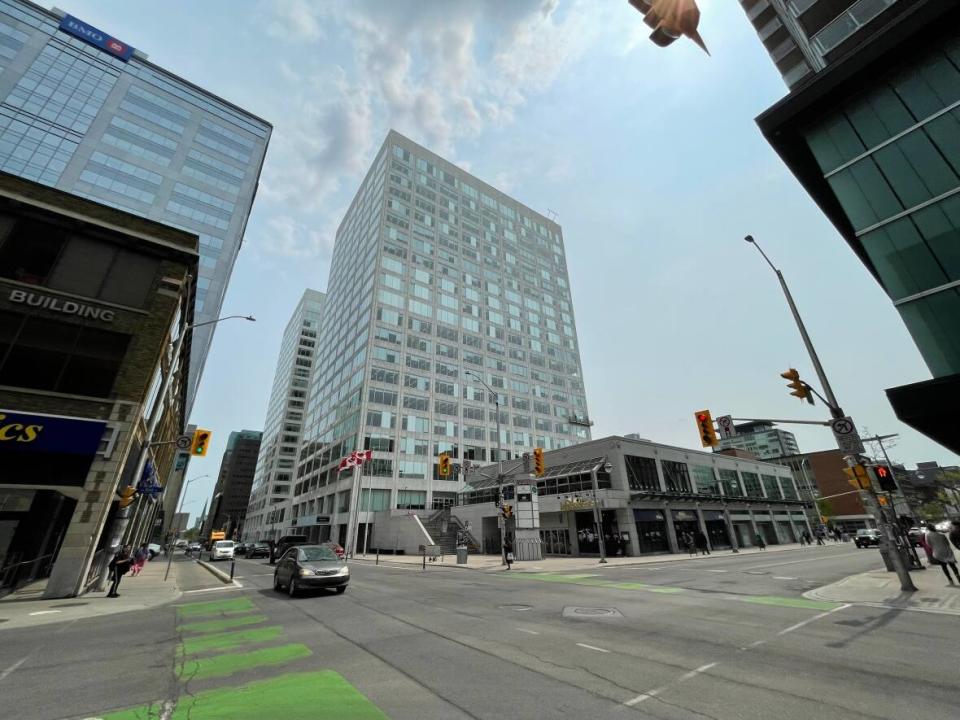
The influx of properties could flood the market, but also present a chance to re-imagine the city, according to local real estate and business leaders.
Paul Thompson, the deputy minister of Public Services and Procurement Canada (PSPC), said the government was already inefficient in using its real estate before the pandemic, though the move to a hybrid-work model has further cut its needs.
“That obviously reduces the overall requirement for office space, which is being taken into account in decisions that we make on lease renewals and what buildings in the Crown-owned portfolio do we retain,” he told members of the Standing Committee on Government Operations and Expenditures on Monday.
“Obviously we see an opportunity for a fairly significant reduction in the coming years.”
Thompson said government departments are now reporting their needs for office space, as PSPC renews its 10-year plan in light of the hybrid-work model. That will mean savings on rent plus income from sales, but also investment outlays to get the properties ready for sale.
“Our previous target was to reduce the portfolio by 40 per cent. We now think we can reduce it closer to 50 per cent as a target,” Thompson said.
Real estate experts taken by surprise
The federal government holds about 29 million square metres of floor space across the country, with the largest chunk in the hands of the Department of National Defence. PSPC has the second biggest portion, with 6.9 million square metres. Much of that, though not all, is office space. More than half — about 3.8 million square metres — is in the Ottawa-Gatineau area.
The department recently released a disposal list of 10 properties up for sale in the capital region, including downtown’s L’Esplanade Laurier and a prominent tower at Tunney’s Pasture.
The department’s announcement of a 50 per cent target took commercial real estate brokers by surprise, said Michael Church, managing director at Avison Young Ottawa. He said the department floated a much lower number at a recent real estate forum.
Church already noticed a pause in Ottawa office development given the move to hybrid work, and the deeper federal reductions are likely to add to those pressures.
“If you’re going to give back a large, relatively large footprint relative to the market, I think that certainly it will spark a pause,” he said.
Church said he’s confident the market will recover, though it will take time.
“The recovery won’t happen as quickly as it did in the early 90s and coming out of 2007-08, when we had the last economic crunch,” he said. “It may take a little bit longer than that, just because there’s a large volume of property that’s coming back.”
Potential demolition of properties
Church sees opportunities to convert several federal properties into housing, including the Tunney’s Pasture tower now up for sale, though others might have to be demolished. He called the L’Esplanade Laurier site a prime location to start from scratch and build a mixed-use development.
“Not all buildings are suitable for conversion, that much is pretty clear. You think about residential versus office space, just the whole plumbing question and the core drilling that has to happen,” he said.
“It’s a very expensive process and one that has to be carefully looked at.”
Sueling Ching, CEO of the Ottawa Board of Trade, hopes the properties come up for sale quickly. She’d prefer to see them occupied by new tenants soon, rather than sitting idle as federal workers stay home.
“A lot of those buildings were already underutilized, and so the worst-case scenario would be for them to hold on to those properties and never have anybody there,” she said.
She also wants more transparency from the federal government about when it will dispose of its real estate, so business leaders can plan.
“Let’s not just get them on the market, but have very thoughtful and strategic conversations with the communities that will be impacted, including Ottawa, so that there is a common vision among both the private and the public sector for what is the highest and best uses for those properties,” said Ching.
“I think the end result will be positive.”
PSPC said in a statement that it consults with provinces, cities and Indigenous groups as part of the disposal process, and noted using federal buildings for affordable housing, commercial or community space can generate important economic and social benefits.
It said no purchases have yet been made.
“This process can take several years,” the statement said.
*****
Credit belongs to : ca.news.yahoo.com
 Atin Ito First Filipino Community Newspaper in Ontario
Atin Ito First Filipino Community Newspaper in Ontario






